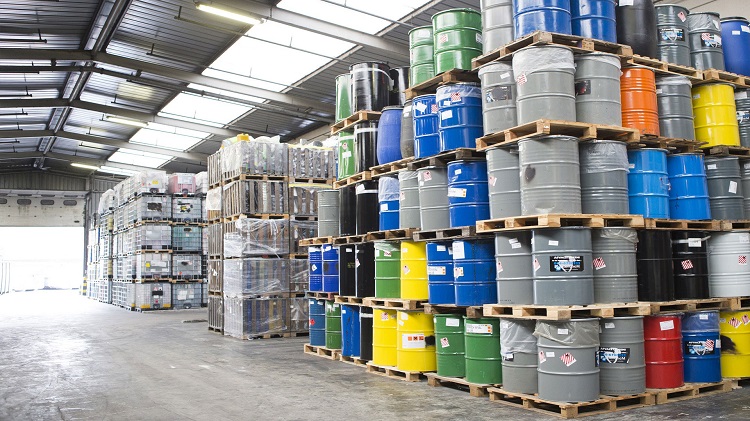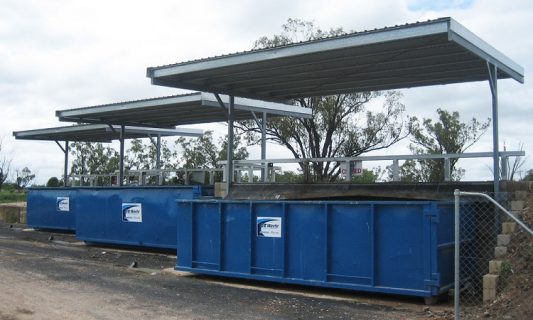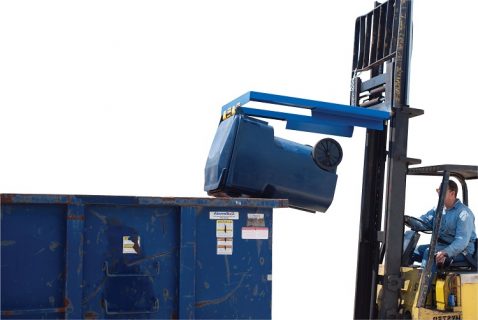No matter what type of industrial facility or setting you work in, industrial waste management is an essential part of your processes. While offices may get away with using just about any type of bin before taking the trash to the dumpster, the sharp, heavy and irregularly shaped items found in construction and other industrial environments require heavy-duty waste bins that have a higher maximum capacity and are more convenient to empty with material handling equipment like a crane.
So, how can a warehousing, construction, mine or other industrial manager ensure that their waste bins can stand up to the specific requirements of the job site while limiting productivity-loss and hazards? In order to get an answer to that question, there are a couple of things they need to figure out.
The Waste Streams of The Facility
Responsible businesses can’t just throw everything into the landfill. There are four methods of handling materials categorised based on most beneficial for the environment to the least beneficial:
- Avoid generating waste and reuse waste materials without any processing;
- Recycle waste into reuseable materials’
- Recover energy from waste with a waste-to-energy technology;
- Dispose of waste without endangering the environment.
In the majority of industrial applications, this leads to two different waste stream categories – landfill waste and recycling. Recycling is usually divided into a few material types (metal, paper, glass), each kept in different types of waste bins. Some food manufacturers, for example, establish a compost stream on top of their land-fill and recycling wastes. Toxic waste is a whole different story – it must be kept out of the municipal solid waste stream in containers for hazardous materials. Maintaining clean recycling streams has become very important. In 2018, China banned the majority of imported plastic wastes, after which many other countries followed suit.
Waste bins themselves are an invaluable piece of industrial and construction equipment to keep the different waste streams separated. You can assign a visual label and colour to each stream, and make sure the waste bins are colour-coded to match. Yellow landfill containers, and green recycling bins, for example, will be distinguished between easily. Even dumpsters can be colour-coded and labelled to make sure that landfill and recycle waste is kept separate.
Are the Waste Bins Going to be Outdoors?
Outdoor industrial waste bins, such as those used in construction, should include features that indoor bins don’t need. If you intend on storing your waste outside the facility, or if your indoor bins need to spend some time outdoors, look for the following characteristics:
- The bin should feature heavy-duty construction, be tough, but not too heavy. While stainless steel is incredibly strong, it also weighs a lot. On the other hand, high-density polyethylene is also very strong, and when injection moulded, provides a great combination of high-resilience and low weight. However, if you’re looking for an outdoor waste bin, then make sure the high-density polyethylene is UV-stabilised otherwise, the plastic may weaken and wear down prematurely.
- The construction of the bin should be reinforced, especially around the edges and base, as those areas are very prone to wear.
- The waste bin should also have a weather-proof lid so that it doesn’t fill with rainwater. If the bin is filled with water, it can be unsafe to handle. Additionally, the waste may attract pests. To prevent these problems, outdoor waste bins should be equipped with a tight, weather-proof lid.
How Heavy Is the Waste That Your Facility Generates?
In order to choose the right type of material waste bins, begin with the attributes of your typical loads. What materials will you be removing from the facility? Moreover, how heavy are those materials? Higher-weight materials, such as stone, concrete or metals, will probably require a much different design than lightweight materials.
For most industrial applications, roll-out carts are the standard. For heavier applications, however, mobile waste bins are preferred. Given the safety risks associated with pulling or pushing heavy loads, employers should also look to provide adequate material handling and construction equipment in applications that deal with extremely heavy loads. Which leads to the next thing to be considered:
What Type of Material Handling Equipment Is Available?
Many industrial waste loads can expose employees to toxic hazards. Manually handling and emptying waste bins significantly increases the risk of musculoskeletal disorders and injuries. The best way to keep waste handling safe is to use material handling equipment specifically designed for the purpose, such as:
- Electric Tuggers – These allow a single operator to push or pull fully loaded mobile waste bins without any strain. Some models can handle loads up to 25 tonnes, which is usually what you’ll find on most source-level waste streams.
- Waste Bin Dumpers – These pieces of equipment can safely lift and empty waste bins of almost any design and weight. They remove all the risks that come with manual handling, and they’re available in both stationary and mobile designs. Additionally, these pieces of equipment eliminate ergonomic risks, reduce time spent on handling and protect the bins themselves from improper treatment.
Determining Waste-Handling Needs
The ideal way to plan for your facility’s waste-handling infrastructure is to understand your waste streams. This requires a waste audit which is mainly performed for assessing your waste-reduction programs, but it can also help you find potential improvements in your waste management processes, including choosing the best industrial waste bin. There are three main methods to perform a waste audit, and any combination of these three methods can be helpful.
- Assess Your Waste Stream Composition Through Records – You don’t always have to get your hands dirty to understand your waste-handling needs. You probably keep detailed records on waste generation, but even if you don’t – contracts with waste haulers can give you an idea of the volume of materials involved in each and every one of your waste streams. You can also compare the volume of materials with the volume of materials used in your manufacturing processes.
- Walk Through Your Processes – If you can’t get the information you need through records, try this method. It includes connecting the waste streams to the processes that create them. Furthermore, it provides department managers with a breakdown which can also help decide where to place the waste-handling infrastructure.
- Measure, Sort and Record Waste – Properly sorting the waste is arguably one of the most important things to do. Collecting the waste bins from around the worksite, emptying them into a sorting floor and separating the waste by type will give you detailed information about your waste-handling needs.



